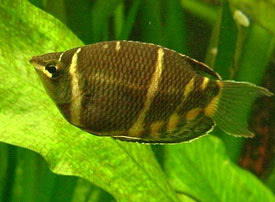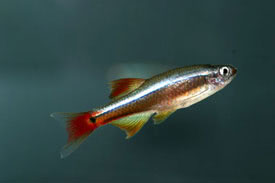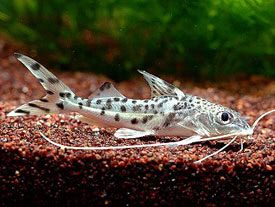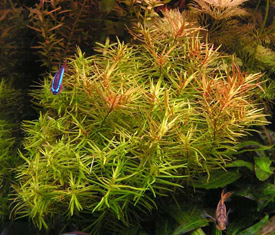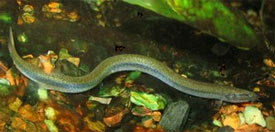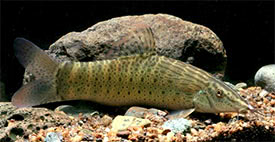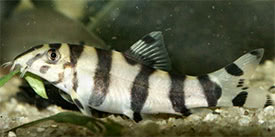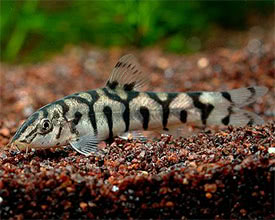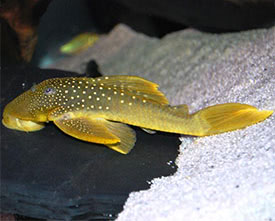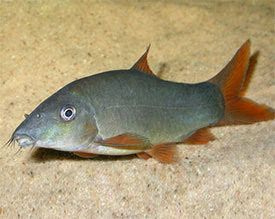
 Magyarul / Hungarian
Magyarul / Hungarian
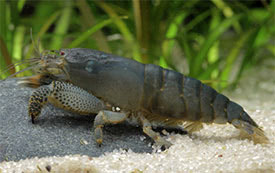
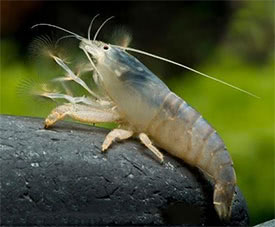
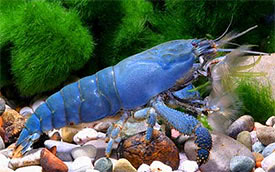
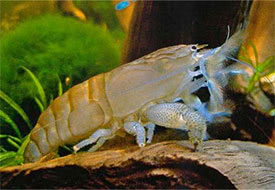
- Scientific name: Atya gabonensis
- Synonyms: Atya sculptata (Ortmann, 1890), Euatya sculptilis (Koelbel, 1884)
- Common name: African Giant Filter Shrimp, African Fan Shrimp, Vampire Shrimp
- Group: Freshwater invertebrates
- Habitat: Africa; from Senegal to the Democratic Republic of the Congo, and in South America from Venezuela to Brazil
- Size: 12-15 cm
- Biotope: Found in rocky streams and rivers with a sufficient flow.
- Social behavior: Quite peaceful, and rather shy shrimp that can be kept in a community tank, and will not harm even the smallest fry or other shrimps. They usually active at night, and during daytime they hide in their favorite hiding place. Do not keep with any large or aggressive fish that can eat them.
- Diet: Omnivorous; A filter feeder shrimp, that uses its feather-like claspers to filter particles and algae from the water and it also pick food particles from the substrate. They should be fed after the aquarium lights out.
- Breeding: Very rare in aquarium
- Tank: Minimum 60 litres
- Population: 4-5 shrimp for 110 litres
- Decoration: Provide them a densely planted mature aquarium with many hiding places. They also like high water-flow and adequately aerated water. Place some roots in the water flow, where they can climb up to filter food particles from the water. The substrate can be gravel.
- Temperature: 23-29 °C
- pH: 6.5-7.8
- Hardness: 2-10 NK°
- Lifespan: 3-5 years
Description: The color of the African Giant Filter Shrimp can vary from a creamy white to rusty brown, while there is also a blue color variant. Some say that water conditions may affect their body colors and harder water causes the blue morph. Despite their size and look they are harmless species and will not hurt even the smallest fry or other, smaller shrimp, so they can be housed in the same tank. Interestingly they have feathery bristles on their first 2 legs which can be opened like fans, and with these fans they can filter the water for food particles. During daytime they usually hide in caves, often several shrimp occupy the same shelter, and they rather prefer tight fit caves. Like many invertebrates, fan shrimps are very sensitive to copper that is found in many fish medication, and they also sensitive to ammonia and nitrite. This is a rarely seen species in the hobby, most of them found at the stores are wild caught.
It is almost impossible to distinguish the sexes, and their breeding is very rare in aquarium. Brackish water or saltwater is required to raise the newly hatched larvae. The young exist in a drifting, planktonic state before changing into a miniature adult-like form after several molts.
Breeding report with pictures and video:
http://www.crustahunter.com/en/breeding-report-atya-gabonensis/








